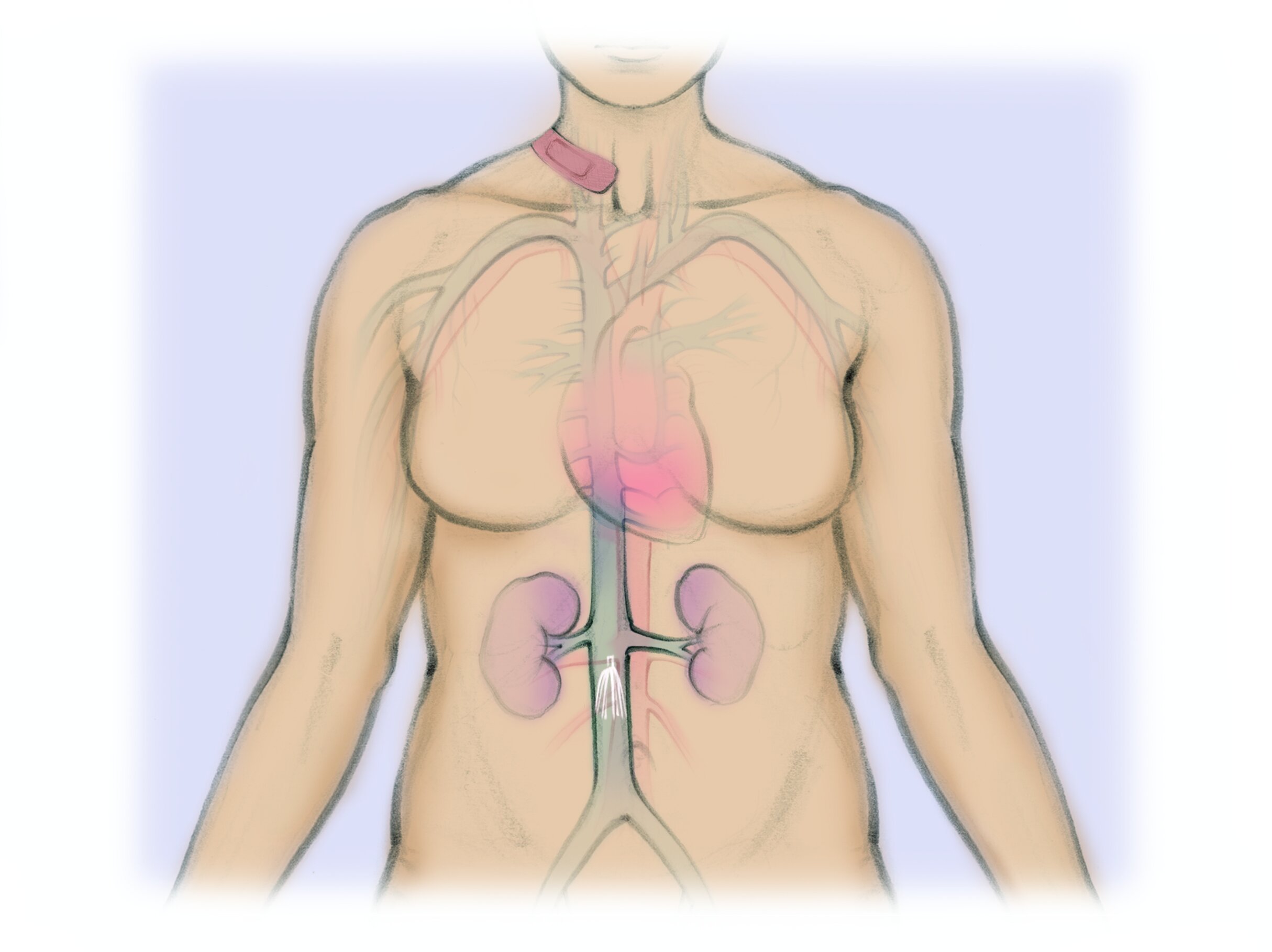What is an IVC filter?
The inferior vena cava (IVC) is a large vein in the belly. It carries blood from the body back to the heart and lungs. If blood clots develop in the belly or legs, they can break off and go to the lungs. This can be life-threatening.
An IVC filter is a metallic device that is put in the IVC to catch blood clots before they can travel to the lungs. Most people with blood clots do not need an IVC filter. Usually, they can be treated with medicines called blood thinners. Not everyone can take blood thinners, though, and they may not work well enough for some people. IVC filters can help protect them by catching the blood clots before they can reach their lungs. IVC filters do not treat or prevent blood clots.
Most IVC filters can be removed when they are no longer needed. IVC filters can also stay in a person for life if needed.
How is an IVC filter placed?
You will lay on a special table on your back. You will be given medicine through an IV to make you drowsy. The clinician will numb your neck or the top of the leg. They will use moving x-rays to guide the IVC filter in the right spot inside the body. After, the clinician will cover the pinhole in the neck with a small bandage. There are no stitches.
IVC Filter Placement
1. The clinician puts a wire in a vein in the neck or top of the thigh.
2. The clinician uses moving x-rays to guide the IVC filter through a small catheter into the right spot inside the body.
3. The clinician places the IVC filter, removes the catheter and puts a bandage over the pinhole in the skin.
What are the risks?
IVC filter placement is generally a safe procedure when done by a specialist.
IVC filter will fail to prevent a clot from traveling to the lungs in 5 in 100 people.
IVC filter will cause a clot to form in the IVC in 1 to 5 in 100 people.
IVC filter will damage the vein or surrounding tissues, break, or move over time in less than 1 in 100 people.
What are the alternatives?
Alternative 1 Blood thinners. Blood thinners are very common medicines that prevent your blood from making clots. However, if you have a high risk of bleeding, blood thinners may not be safe. Blood thinners may not be enough to protect some patients with blood clots.
Alternative 2 No treatment. However, no treatment can lead to the clots traveling to the lungs. This is called pulmonary embolism and can be life threatening.




